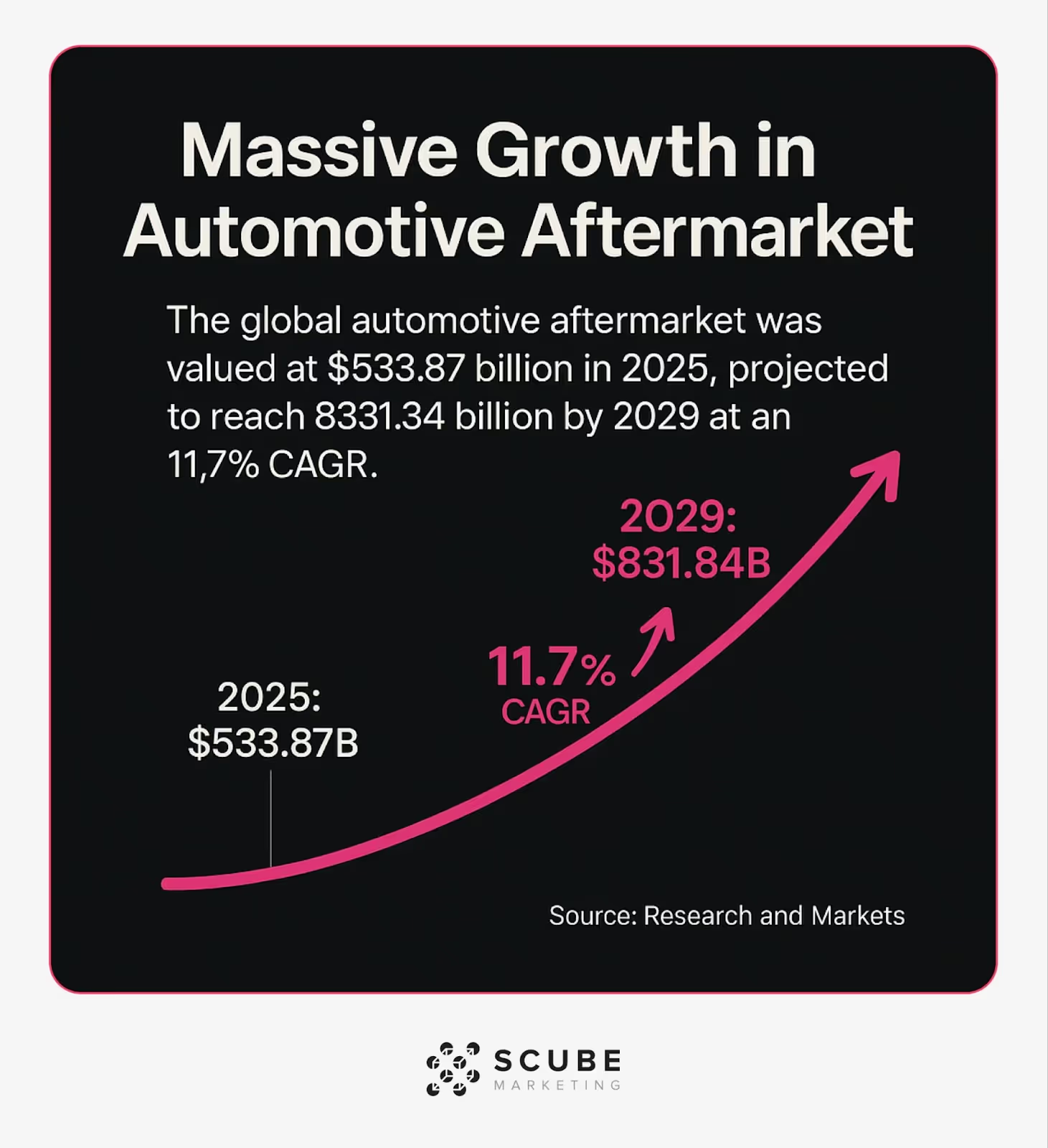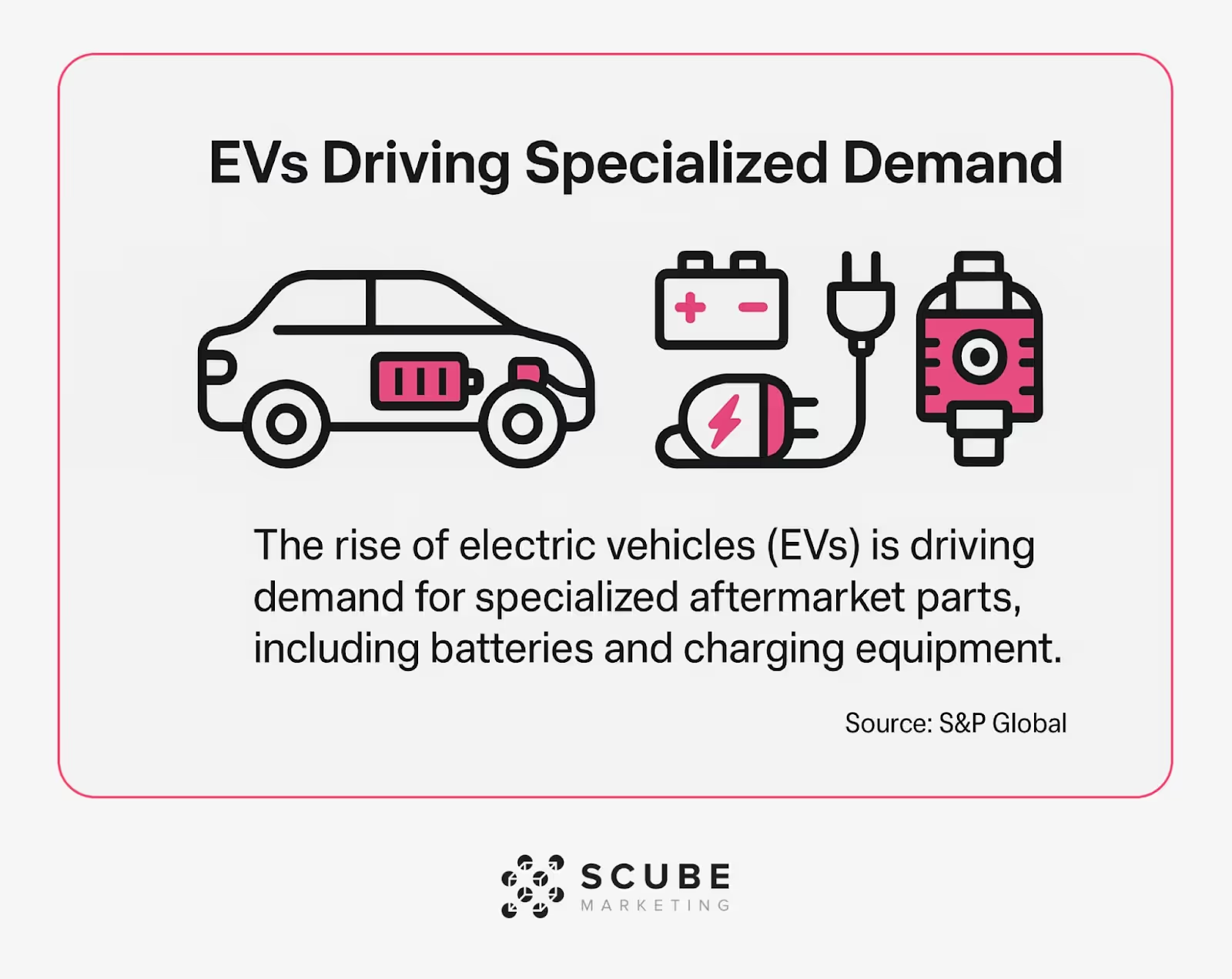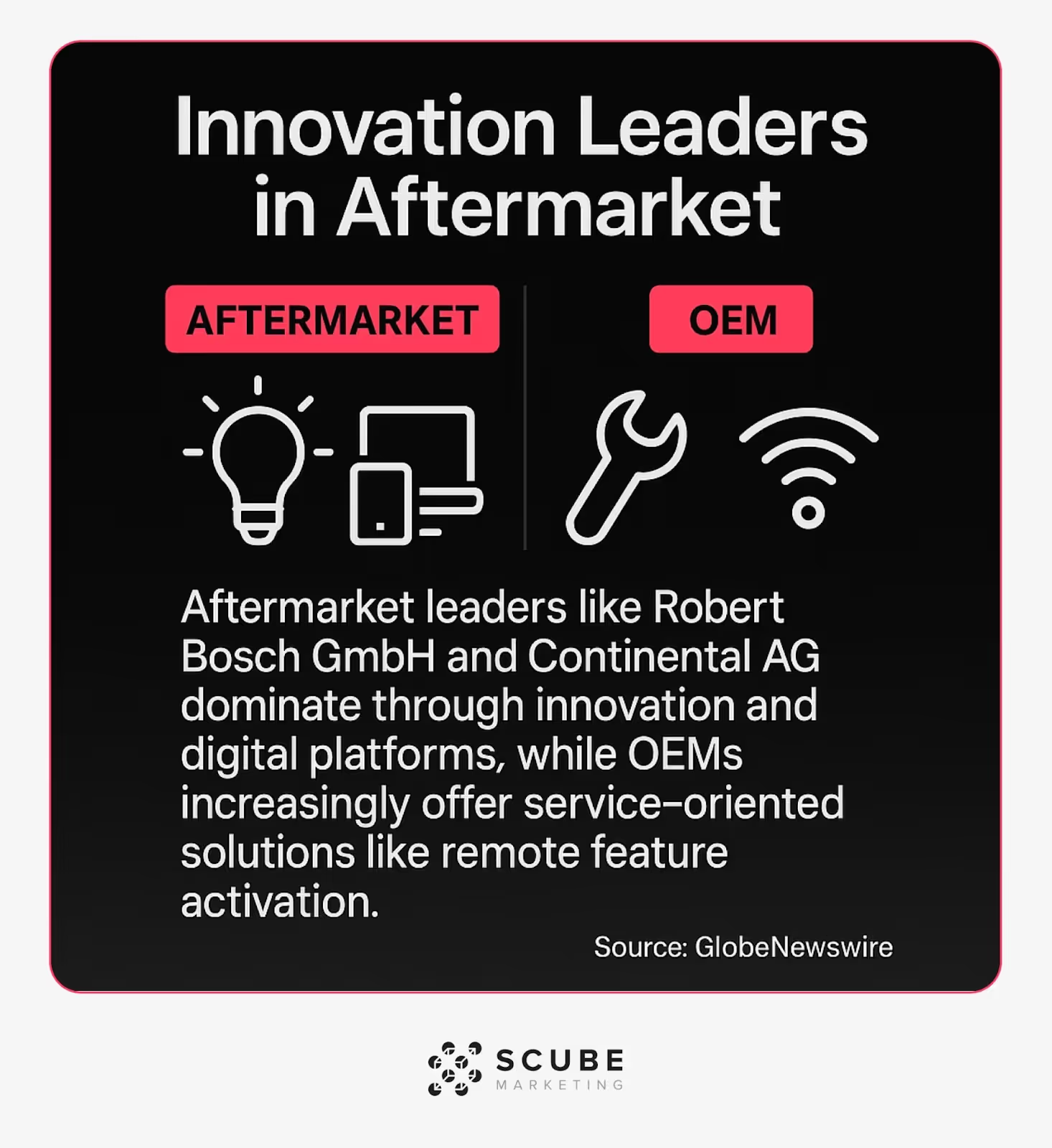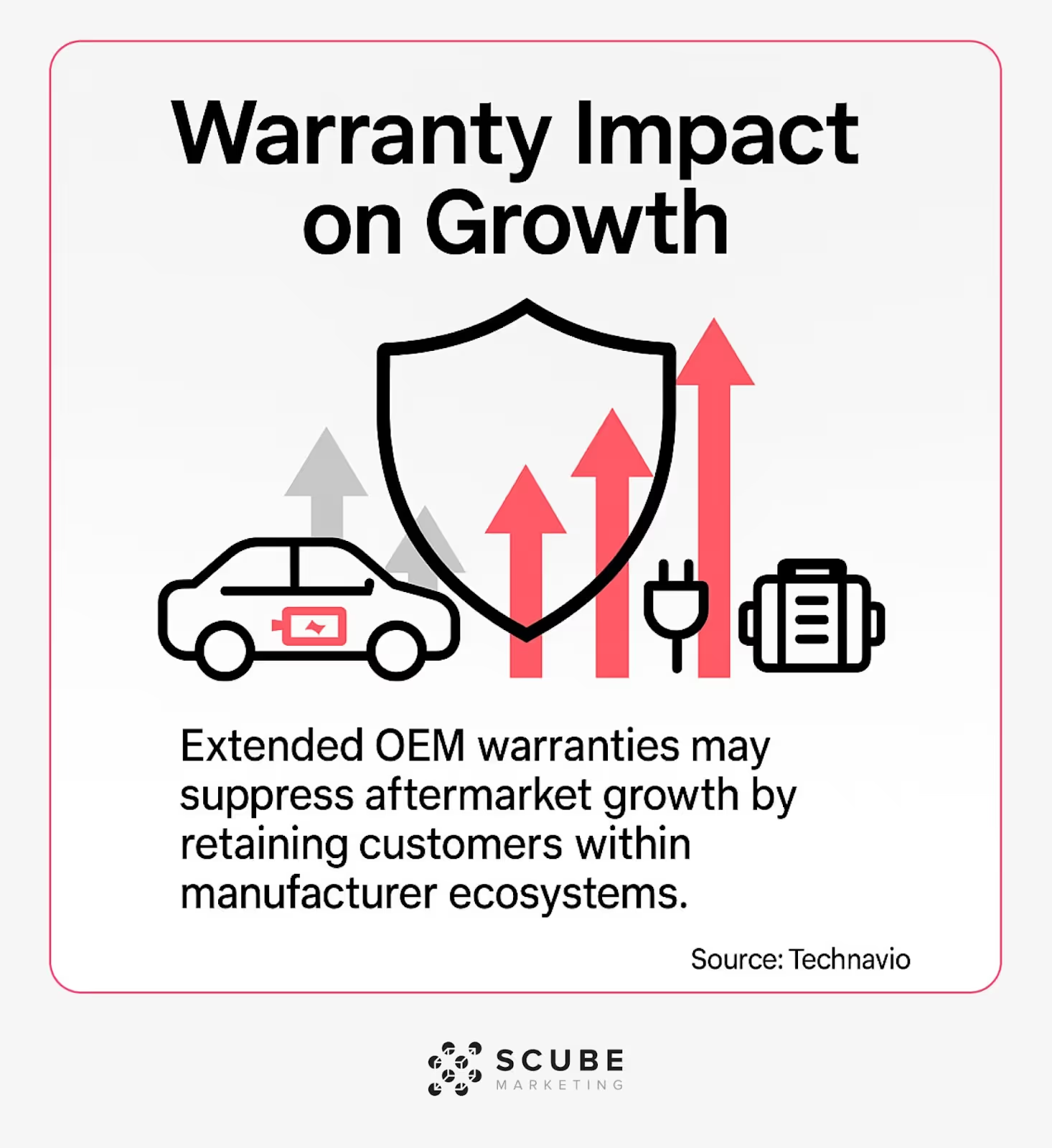
Marketing auto parts requires specialized knowledge. The distinction between OEM and aftermarket parts represents more than just different products—it reflects entirely different business models, customer needs, and marketing approaches. As someone who's helped numerous automotive parts businesses grow their online presence, I've seen firsthand how understanding these differences drives marketing success.
Whether you're selling original equipment manufacturer (OEM) parts or aftermarket alternatives, knowing how to position your products makes all the difference. This distinction affects everything from your pricing strategy to your messaging and channel selection.
In this article, I'll break down the fundamental differences between OEM and aftermarket marketing. You'll learn what makes each unique, their specific challenges, and how to leverage their strengths in your marketing efforts.
OEM parts come directly from the original vehicle manufacturer. These are identical to the parts used during the original assembly of the vehicle. Ford makes Ford parts, Honda makes Honda parts—you get the idea. These components match the exact specifications of what came in your vehicle when it was new.
When dealers replace parts on vehicles under warranty, they use OEM parts. These components come with several key characteristics that shape their marketing approach:
For consumers seeking peace of mind and guaranteed compatibility, OEM parts offer significant advantages. This certainty comes at a premium price, which becomes a central consideration in marketing these products.
The OEM parts business operates through a controlled distribution network. Vehicle manufacturers produce the parts and distribute them primarily through authorized dealerships and certified repair shops. This creates a closed ecosystem that offers both advantages and limitations.
Pricing for OEM parts tends to be fixed across authorized sellers. This pricing consistency removes price competition between dealers but creates opportunity for aftermarket alternatives. Dealers offset these higher prices by emphasizing quality, perfect fit, and manufacturer backing.
The relationship between dealers and manufacturers shapes the entire marketing approach. Dealers benefit from manufacturer support, training, and co-op marketing funds. In return, they maintain brand standards and support the manufacturer's warranty programs.
Aftermarket parts are produced by companies other than the original vehicle manufacturer. These parts range widely in quality and price, from budget alternatives to premium performance upgrades. The aftermarket represents a massive industry that continues to grow rapidly.

The global automotive aftermarket was valued at $533.87 billion in 2025, projected to reach $831.84 billion by 2029 at an 11.7% CAGR. (Source: Research and Markets)
Unlike the uniform nature of OEM parts, aftermarket components exist across a quality spectrum:
This variety gives aftermarket sellers marketing flexibility. They can position their products based on price advantage, performance benefits, or unique features unavailable from OEM suppliers.
Aftermarket parts flow through diverse distribution channels. These include auto parts retailers, independent repair shops, online marketplaces, and direct-to-consumer e-commerce. This open distribution creates greater market reach but also intensifies competition.
Pricing in the aftermarket varies significantly based on brand reputation, quality level, and distribution channel. This price flexibility allows marketers to target different customer segments. A single part might be available across multiple price points and quality levels.
The aftermarket serves several distinct customer segments. DIY (do-it-yourself) enthusiasts seek affordable parts and technical guidance. DIFM (do-it-for-me) customers work with independent repair shops that often use aftermarket parts. Performance enthusiasts look for upgrades rather than exact replacements.
For those selling in this space, understanding aftermarket auto parts ecommerce success strategies is essential to capturing market share in this competitive environment.
Marketing approaches differ dramatically between OEM and aftermarket parts. These differences stem from their underlying business models, target audiences, and value propositions. Understanding these distinctions helps create more effective marketing strategies.
Target audiences represent perhaps the most fundamental difference. OEM marketing primarily targets vehicle owners who prioritize reliability and warranty coverage. Aftermarket marketing reaches a broader audience, including cost-conscious consumers, performance enthusiasts, and independent repair shops.
Value propositions also differ significantly. OEM marketing emphasizes factory quality, perfect fit, and warranty protection. Aftermarket marketing typically highlights cost savings, wider selection, and in some cases, performance improvements over stock parts.
The following table breaks down the core differences between these two marketing approaches:
These differences create distinct marketing requirements. OEM marketing relies heavily on the manufacturer's brand authority. Aftermarket marketing must build independent credibility through reviews, certifications, and detailed product information.
OEM parts marketing leverages several unique advantages. The connection to the vehicle manufacturer provides built-in authority that aftermarket brands can't match. Effective OEM marketing capitalizes on this relationship while addressing potential objections.
Digital marketing for OEM parts focuses on highlighting quality and fit guarantees. Search campaigns target specific vehicle makes and models paired with "genuine parts" or "original parts" keywords. Product listings emphasize factory specifications and warranty coverage.
Dealership integration plays a central role in OEM marketing. Parts departments coordinate with service centers to create bundled offerings. Service reminders include parts replacement recommendations. This integration creates multiple touchpoints with vehicle owners.
Quality messaging dominates OEM marketing content. Comparisons with aftermarket alternatives emphasize the risks of improper fit or premature failure. Educational content explains the engineering and testing behind original parts. Customer testimonials highlight peace of mind and reliability.
Despite their advantages, OEM marketers face significant challenges. The most obvious is price perception. Consumers often experience sticker shock when comparing OEM parts to aftermarket alternatives. Effective marketing must justify this premium through value-based messaging.
Limited market reach presents another challenge. The controlled distribution through dealerships restricts access to the broader market of DIY enthusiasts and independent shops. Online OEM parts sales help address this limitation but require different marketing approaches than traditional dealer channels.
Competition from aftermarket brands creates ongoing pressure. Aftermarket marketers aggressively target OEM customers with price-focused messaging. OEM marketers must continuously reinforce their value proposition against these alternatives.
The following table summarizes the key advantages and challenges in OEM marketing:
Successful OEM marketing requires balancing these factors. The best campaigns emphasize long-term value over initial price. They explain the hidden costs of inferior parts through education rather than fear tactics.
Aftermarket marketing thrives on flexibility and market responsiveness. Without the constraints of manufacturer pricing or distribution requirements, aftermarket brands can adapt quickly to market demands. This agility becomes a key marketing advantage.
Digital marketing for aftermarket parts heavily emphasizes competitive pricing. Google Shopping campaigns highlight price advantages over OEM alternatives. Remarketing targets consumers who've viewed OEM parts with messages about cost savings and quality assurances.
Price positioning remains central to aftermarket marketing, but requires nuance. Marketing language focuses on "value" rather than "cheap." Messaging emphasizes the question: "Why pay more for the same quality?" Quality guarantees and warranties help overcome potential concerns about lower prices.
Variety emphasis differentiates aftermarket marketing from OEM approaches. While OEM parts offer one factory option, aftermarket marketers highlight multiple choices at different price points. This variety appeals to consumers who want options based on their specific needs and budget.
For companies looking to increase sales in this sector, implementing effective automotive email marketing for aftermarket sales can help nurture customer relationships and drive repeat purchases.
Quality perception represents the biggest challenge for aftermarket marketers. Consumers often associate lower prices with inferior quality. Effective marketing addresses this concern head-on through guarantees, warranties, and third-party certifications.
Fit and compatibility concerns also challenge aftermarket marketing. Unlike OEM parts guaranteed to fit specific vehicles, aftermarket parts require more detailed fitment information. Marketing must emphasize compatibility checking tools and easy returns for fitment issues.
Warranty limitations compared to OEM coverage require strategic handling. Instead of hiding these limitations, successful aftermarket marketing highlights the specific protections offered. Some brands even offer longer warranty periods than OEM to overcome this objection.
The following table outlines the key advantages and challenges in aftermarket marketing:
Successful aftermarket marketing addresses these challenges directly. Transparent quality information, detailed compatibility tools, and customer reviews help build trust. Educational content explains compatibility and quality in detail rather than relying on price alone.
Understanding market dynamics helps inform effective marketing strategies for both OEM and aftermarket segments. The automotive parts market continues to grow globally, with particularly strong expansion in the aftermarket sector.

The rise of electric vehicles (EVs) is driving demand for specialized aftermarket parts, including batteries and charging equipment. (Source: S&P Global)
Several factors drive this growth. Vehicle populations continue to increase globally. Cars remain in service longer, creating more replacement part needs. Economic conditions push some consumers toward repairs rather than new vehicle purchases.
The following table compares key market metrics between OEM and aftermarket segments:
These market dynamics create different marketing imperatives. OEM marketers must expand their reach beyond traditional dealer networks to capture market share. Aftermarket marketers need to build quality credibility while maintaining their price advantage.
Digital marketing effectiveness varies between OEM and aftermarket parts. Each segment requires tailored approaches to channel selection, messaging, and targeting. Understanding these differences improves marketing ROI significantly.
PPC and Google Shopping campaigns drive significant results for both segments. For OEM parts, exact vehicle fitment targeting is essential. For aftermarket, price comparison features become critical. Both benefit from negative keyword strategies that prevent wasted spend on unqualified searches.
Search engine optimization approaches also differ between segments. OEM content focuses on exact part numbers and vehicle-specific applications. Aftermarket SEO emphasizes comparative content, upgrade benefits, and broader compatibility across vehicle types.
Social media effectiveness varies by platform and segment. Facebook and Instagram work particularly well for aftermarket parts with visual appeal and customization potential. OEM parts benefit from more technical platforms where specifications and factory authenticity matter more.
Different digital channels deliver varying results for OEM versus aftermarket marketing. Understanding these patterns helps allocate marketing budgets more effectively. The right channel mix depends on your specific part types and customer segments.
Extended OEM warranties may suppress aftermarket growth by retaining customers within manufacturer ecosystems. (Source: Technavio)
The following table compares channel effectiveness between OEM and aftermarket marketing:
Channel effectiveness varies not just by segment but also by specific part type. Visual products like wheels, body parts, and lighting benefit more from image-focused platforms. Technical components require more detailed content through blogs and product descriptions.
Effective auto parts marketing requires understanding distinct customer segments. Each has different needs, buying triggers, and preferred channels. Targeting your messaging to these segments improves conversion rates significantly.
The DIY segment represents consumers who install parts themselves. They value detailed installation instructions, compatibility information, and technical support. Price sensitivity varies within this segment, with some prioritizing quality and others seeking the lowest cost.
The DIFM (do-it-for-me) segment comprises consumers who purchase parts but have professionals install them. They research parts online but may purchase through their mechanic. Warranty and quality assurances matter more to this segment than detailed technical specifications.

Aftermarket leaders like Robert Bosch GmbH and Continental AG dominate through innovation and digital platforms, while OEMs increasingly offer service-oriented solutions like remote feature activation. (Source: GlobeNewswire)
Performance enthusiasts form another key segment, particularly for aftermarket parts. They seek improvements over OEM specifications rather than direct replacements. This segment values detailed performance data, compatibility with other modifications, and installation support.
Age demographics also influence parts purchasing. Younger vehicle owners show greater openness to aftermarket options and online purchasing. Older demographics display stronger dealer loyalty and preference for OEM parts. Marketing messages should reflect these tendencies.
Several trends are reshaping auto parts marketing for both OEM and aftermarket segments. Staying ahead of these changes helps marketers adapt their strategies proactively rather than reactively.
The growth of electric vehicles creates both challenges and opportunities. EVs have fewer mechanical parts but more electronic components. This shift changes the mix of high-demand replacement parts and requires new marketing approaches focused on tech rather than mechanical benefits.
Digital transformation continues to accelerate across the industry. Online parts sales keep growing as a percentage of total sales. Mobile search, including voice search for parts, increases yearly. Marketing strategies must adapt to these digital-first purchasing patterns.
The aftermarket in the US specifically is projected to grow by USD 41 billion between 2025 and 2029, driven largely by the benefits of OE replacement parts and market evolution powered by AI. (Source: PR Newswire)
Consumer behavior shows increasing research before purchase. The average parts buyer consults multiple sources before making a decision. Content marketing becomes more critical as consumers seek detailed information about compatibility, quality, and installation.
Both OEM and aftermarket marketers must adapt to these industry shifts. Strategy adjustments should focus on digital excellence, content quality, and customer experience improvements.
For OEM marketers, expanding beyond dealer networks becomes essential. Direct-to-consumer e-commerce platforms help capture DIY customers who might otherwise choose aftermarket. Enhanced digital content helps justify the price premium compared to alternatives.

Aftermarket marketers should focus on building quality credibility. Certification programs, extended warranties, and transparent testing information help overcome quality perception challenges. Enhanced fitment tools reduce compatibility concerns that drive consumers to OEM options.
Both segments benefit from enhanced product content. Detailed specifications, 360-degree images, installation videos, and compatibility databases improve conversion rates. This content investment delivers ongoing returns through improved organic search performance and customer confidence.

Selecting between OEM and aftermarket marketing approaches depends on your business model, target customers, and competitive positioning. Many successful parts businesses blend elements of both strategies to maximize their market reach.
Consider these questions when developing your marketing strategy:
The most successful auto parts marketing strategies focus on customer needs rather than product features. Understanding the "why" behind parts purchases drives more effective messaging than technical specifications alone.
If you're looking to start or grow in this space, learning how to sell auto parts online effectively is essential in today's digital marketplace.
Whether you market OEM or aftermarket parts, digital excellence matters increasingly. The quality of your product data, website experience, and customer support determine success in today's competitive landscape.
Ready to improve your automotive parts marketing strategy? At Scube Marketing, we use a data-driven approach that maximizes your marketing ROI while building long-term customer relationships.